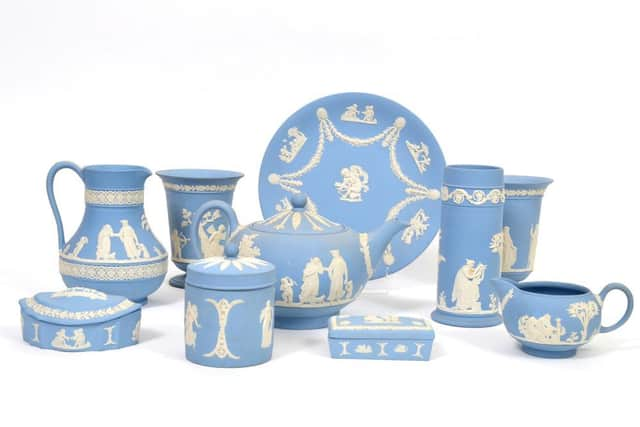Antiques Column: You could say Jasperware was Wedgewood's signature dish
and live on Freeview channel 276
Fred Truman inspired me to the school cricket team, where I played every match. I wasn’t a star, in fact I was far from a star, but I was there, every single game.The twentieth century was full of inspiration.
One of the most inspirational men of the 18th century and there were also many, was Josiah Wedgwood. How exciting it would have been to sit down and chat about his experiences and experiments through the years.
Advertisement
Hide AdAdvertisement
Hide AdThroughout his life Wedgwood experimented relentlessly with different materials and methods of manufacture.However, the enormous success of his factory was due not only to his artistic abilities but also to his realisation that the market needed to be expanded to cater for all levels of society.


From 1754 to 1759 Wedgwood worked alongside the potter Thomas Whieldon making experimental and tortoiseshell wares.
Wedgwood never practised as a potter himself due to a leg injury and rather than being at a disadvantage this enabled him to work on developing pottery bodies and glazes and meticulously documenting his discoveries at the same time.
By 1759 he had set up his own business at the Ivy House Works in Staffordshire where he was making Redware, Whieldon type ware with translucent lead glazes, Blackware, salt glazed stoneware and Creamware.
Advertisement
Hide AdAdvertisement
Hide AdIn 1767 he formed a partnership with Liverpool merchant Thomas Bentley and opened a bigger factory called ‘Etruria’ (after Etruscan pottery which inspired some of the factory’s production).
During the next decade, right up until Bentley’s death in 1780, the company expanded and firmly established its position at the forefront of the market.
It was back in the 1760s that Wedgwood’s famous blue Jasperware was produced.
It was a fine ground, unglazed stoneware, typically decorated with classical figures as you can see in the photograph.One could say it was his signature dish...